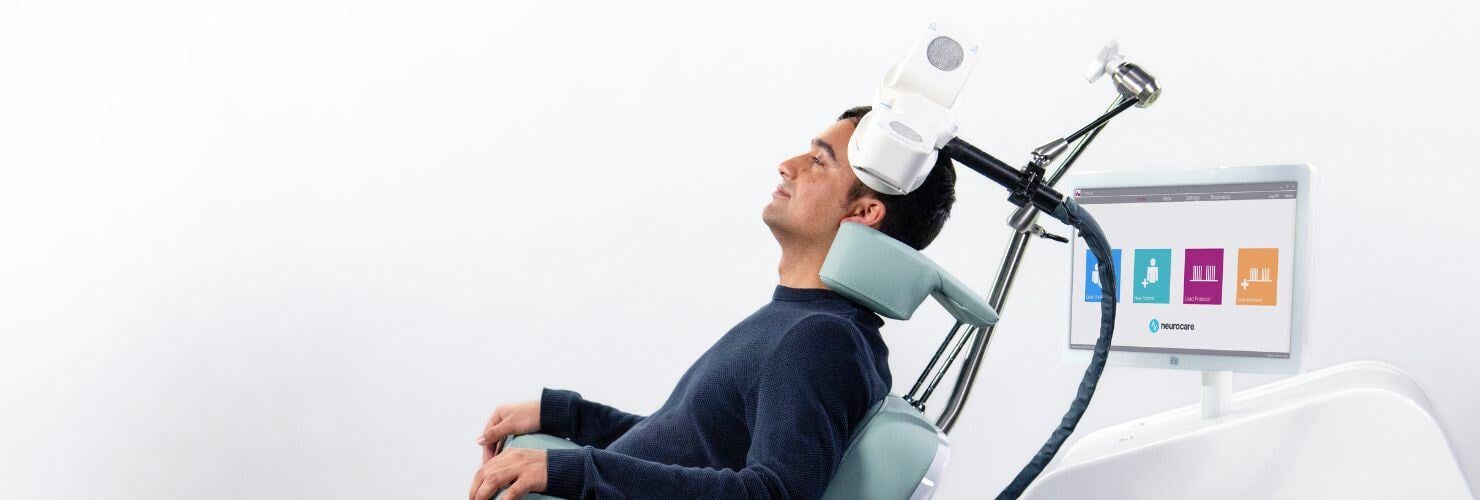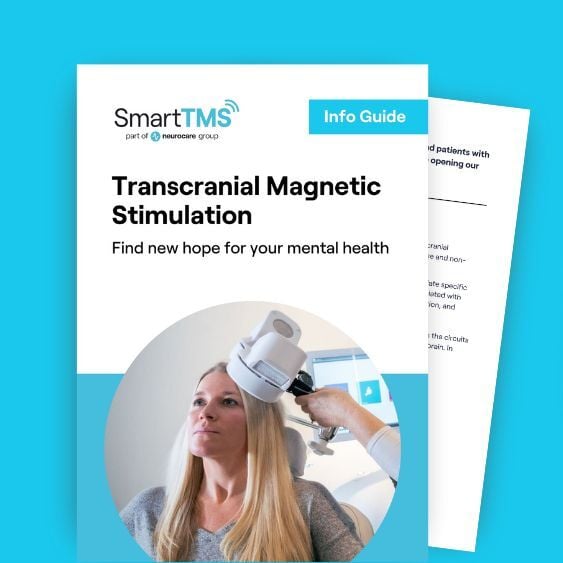Treating alcohol dependence with TMS - the evidence
Can alcohol dependence be treated with transcranial magnetic stimulation? TMS treats cravings from the source to assist patients with alcohol dependence.

How does an addiction affect the brain?
Addictive substances, such as cocaine, alcohol and nicotine, increase levels of the natural chemical messenger, Dopamine. This occurs in brain circuits controlling pleasure and movement. Normally, the brain releases Dopamine in these circuits in response to potential rewards, like the smell of good food. It then recycles the Dopamine back into the cell that released it, shutting off the signal between nerve cells. Addictive substances prevent Dopamine from recycling, causing excessive amounts to build up between nerve cells. This flood of Dopamine ultimately disrupts normal brain communication and causes the intense pleasurable effects. Repeated use of addictive substances can cause long-term changes in the brain’s reward circuit and other brain systems, which may lead to addiction. The reward circuit eventually adapts to the excess Dopamine brought on by the drug. As a result, people take stronger and more frequent doses to achieve the same high and to obtain relief from the withdrawal symptoms.
What treatment is available for alcohol addiction?
The NHS recommends that alcohol misuse disorders should be treated with counselling. This may include: CBT, self-help groups such as AA, 12 step facilitation therapy and family therapy. Detoxification can be conducted with medical help at home, but if it is severe it should be conducted in a hospital. It usually takes 3 to 7 days from the time of your last drink to stop having withdrawal symptoms and medication such as Chlordiazepoxide (Librium) can reduce or stop the withdrawal symptoms.
High dose vitamin supplements may also be required in more severe cases. After detoxification there are a variety of drugs available to reduce the likelihood of a relapse such as Acamprosate, Naltrexone, Nalmefene and Disulfiram. It is reported that more than 80% of patients who receive the above treatment for alcoholism relapse in the first year after the treatment is commenced. However, the risk of relapse goes down over time if the person can remain sober.
For people who remain sober for 2 years about 60% will remain alcohol free and for those who have been sober for 5 years they are very likely to remain sober. It is therefore very important for patients to use every possible scientifically proven method to remain sober in the few years after the initial detoxification.
How does Transcranial Magnetic Stimulation work for addiction?
TMS stimulates the brain and changes excitability in the cortex through magnetic fields over the scalp. The passage of the electric current in the coil induces a transient, high-intensity magnetic pulse that penetrates the scalp and painlessly reaches the neurons of the targeted cortical area. High frequency TMS produces increased cortical excitability, increases neuroplasticity (connections between nerves) and causes dopamine neurotransmitters to be released. Over time this effect penetrates more deeply into the brain influencing the areas associated with the craving and addictive behaviour.
What is the scientific evidence for the efficacy of TMS in alcohol addiction?
Mishra et al. (2015) found significant reductions in alcohol craving scores in patients receiving either right or left rTMS with a large effect size after 10 sessions. Belgers et al. (2022) found ten days of high-frequency rTMS over the right dorsolateral prefrontal cortex, with treatment as usual, led to lower alcohol craving and use, with differences most prominent 3 months after treatment. A meta-analysis by Sorkhou et al. (2022) revealed active rTMS to the DLPFC yields small but significant reductions in alcohol craving. A systematic review by Maatoug et al. (2021) confirmed that the dorsolateral prefrontal cortex (DLPFC) is a good target for treating AUD with high frequency rTMS, by reducing feelings of craving and enhancing cognitive control.
What are the treatment results at Smart TMS?
At Smart TMS, we have a small case series of 4 patients with alcohol addiction treated with TMS over the DLPFC for 2 weeks. A self-report craving score was utilised to measure any change (0-10) where a score of 10 is extremely severe craving. We found that the average reduction in craving scores was 89%.
Conclusions and recommendations:
We recommend that patients with alcohol dependence should initially follow the treatment advice of NHS choices. However, if this treatment proves ineffective in preventing relapses early after detoxification due to alcohol craving there is sufficient scientific evidence to consider trying TMS to stop or reduce the craving.
Our review of the literature indicates that at least 7 days of detoxification from alcohol should precede the start of TMS treatment. This is because sudden alcohol withdrawal during the TMS treatment will increase the risk of a convulsion, which is normally at a rate of only 1 in 50,000 sessions of TMS and therefore very rare.
TMS treatment should be continued for 15 sessions. We recommend that TMS is given at the same time as psychological addiction therapy, which we can also provide.
Maintenance rTMS (2 sessions per month) and/or addiction counselling should be considered to prevent a recurrence of the craving, which has been found to be effective in the prevention of the recurrence of other addiction disorders.

Dr Leigh A Neal MB BCh FRCPsych MRCGP MD
Consultant in Psychiatry and Neuromodulation
Medical Director: Smart TMS










